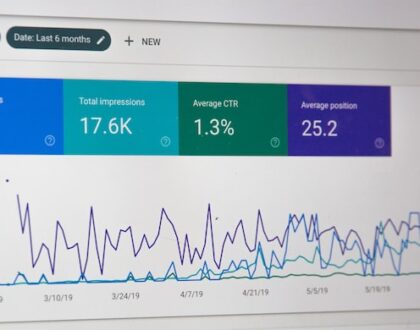Tips for holiday SEO during the busy shopping season

by local
Tips for holiday SEO during the busy shopping season
You want your brand to be “at the right place, at the right moment” when it comes to marketing. This is especially true around the holidays. When your ideal customer is looking for holiday gifts, your brand should be at the top of the search results page. Fortunately, there’s a thing called search engine optimization (SEO) that can assist you.
SEO increases organic website traffic by ranking high in search results for specific keywords. This means that if your firm specializes in outdoor clothing and someone searches for “gifts for hikers,” your website should come up with items that a hiker would love to receive.
According to Retail Customer Experience, more consumers will purchase online this holiday season. In comparison to last year, annual growth is predicted to range between 12.8% and 14.3%. Here are a few crucial aspects to consider while developing your holiday SEO plan to make your store ready for the busy days ahead.
Examine Last Year’s Trends
Begin with related keywords from the previous Christmas season. If you already have Google Search Console installed on your website, you can easily obtain search query data from it. Otherwise, SEO tools such as Ahrefs can be used.
Then, using Google Trends, research those keywords and examine the peaks and valleys of last year’s holiday patterns. The search volume for the keyword “holiday present,” for example, is seen below. As you can see, people began looking for “Christmas presents” in early October. The search volume increased in November but did not peak until mid-December, when it remained high until the week before Christmas.
Understanding your holiday shopping traffic pattern from the previous year aids in identifying and prioritizing areas to optimize and improve this year.
Make sure your target keywords and content are correct.
Understanding last year’s search terms are critical, but don’t stop there. The keywords that will bring shoppers to your website this holiday season may differ from those used last year, especially if new products were introduced prior to the holiday season.
If your SEO is already keyword-optimized, don’t overthink your plan for exploiting holiday-specific keywords. Use what you already have, but start adding seasonal holiday shopping phrases like:
- 2022 Holiday Gifts
- 2022 Black Friday
- 2022 Cyber Monday
- 2022 Holiday Shopping
For general keyword research, you can utilize Google’s Keyword Planner or other SEO tools. Create a good mix of high-volume and long-tail keywords to attract both holiday and regular shoppers seeking anything connected to the product categories you carry.
Improve Your Content’s Search Intent.
First, create a list of target keywords. Now you must ensure that your content is optimized for those keywords in order to rank high on Google’s search results page. Different sorts of keywords convey various search objectives and may necessitate various types of content.
The two sorts of search intent most important to your vacation SEO plan are as follows:
- Commercial Investigation: When customers are not ready to make a purchasing decision but are researching a specific product category. This category includes searches such as “top personal care presents for the holidays.” For this type of search intent, your product catalog or marketing page does not rank well. Instead, write a blog piece, produce a shopping guide, or make a short video to improve your chances of ranking high on this type of search.
- Transactional Intent: This is when someone is ready to buy something and is looking for specific products or deals. Search terms like “Burt’s bees lotion” or “organic lotion on sale” are two examples.
A great place to start (again) is Google Search Console, where you can examine how your target keywords to map to your web pages, if at all. You most likely already have the necessary information and pages. However, if you discover that you aren’t currently ranking for any keywords, you must either generate new content or optimize your existing content for those keywords. If you already have holiday-related content from last year, make sure to update and optimize it so that Google can index your new content.
Correct Your Technicals.
You’ll get a lot of visitors and revenue now that you’ve optimized your content, right? But not so quickly. Keywords and content are important SEO components, but so are technological principles. What good is a website that can’t manage holiday traffic or whose checkout fails? These aren’t holiday-specific difficulties, but their influence on your bottom line is enormous during this time.
Google considers user experience while determining your site’s rating. Check your site’s performance on a frequent basis to ensure that there are no persistent difficulties that could jeopardize its success. Watch out for the following:
- Loading time is slow.
- URLs that are broken.
- Content duplication
- Pages that aren’t secure.
- There are no internal links.
- Problems with formatting.
Optimization of Mobile Performance.
Mobile performance improvement is something that should be prioritized. According to Marketing Dive, smartphone shopping will increase by 25% by 2020.
There are numerous tools available to help you determine your mobile performance, beginning with Google’s PageSpeed Insights to see how fast your mobile pages load.
It is worth noting that Google has expanded its Mobile First Indexing strategy; presently, over 50% of Google’s indexing is done via its mobile crawler, and all new sites are also indexed by its mobile crawler. Your mobile performance and experience will have an impact not only on your mobile shoppers but also on the overall ranking of your website on Google.
Recommended Posts

Can Attentiveness Actually Drive Campaign Success?
November 8, 2024

Maximizing Revenue Growth Through Sales and Marketing Alignment
October 11, 2024

The FTC’s Position on Hashing Should Wake Up Internet Advertisers
September 2, 2024
